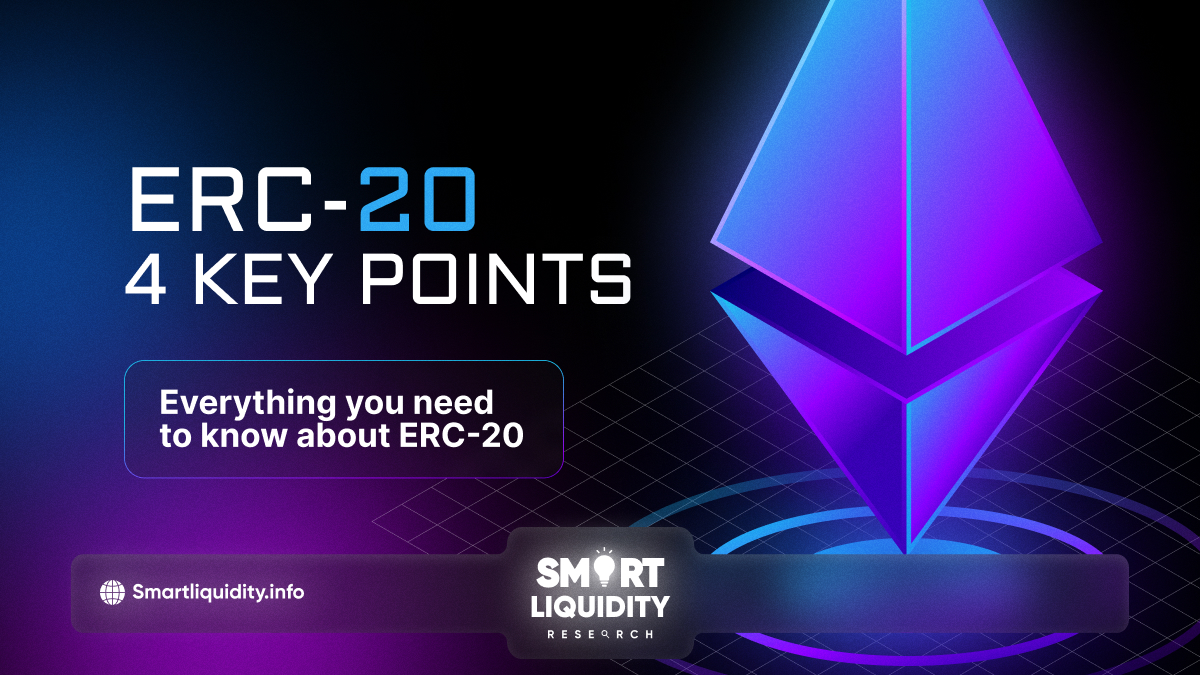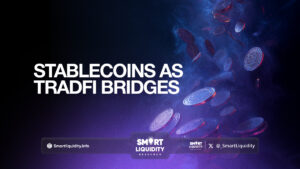ERC-20: 4 Key Points


Everything you need to know about ERC-20
Ethereum was founded by Vitaliy Buterin in 2014, positioning itself as an open-source platform for running decentralized applications (DApps). Many of Buterin’s motives for creating a new blockchain were due to the lack of flexibility of the Bitcoin protocol.
Since its launch, the Ethereum blockchain has attracted developers, businesses, and entrepreneurs, creating a growing industry of users running intelligent contracts and distributed applications.
Below we will speak about the ERC-20 standard and the essential points for creating tokens. While it is specific to the Ethereum network, this structure has inspired other blockchain standards, including Binance Chain’s BEP-2. On the platform ICOholder you can find all the news on blockchain and cryptocurrency.
Some words about ERC-20 standard
Ethereum ERC stands for Ethereum Request for Comments. These are technical documents that outline the standards for programming on Ethereum. They should not be confused with the Ethereum Improvement Proposals (EIP), which, like Bitcoin’s BIPs, offer improvements to the protocol. Instead, ERCs aim to establish agreements that make it easier for applications and contracts to interact with each other.
ERC-20, created by Vitalik Buterin and Fabian Vogelsteller in 2015, offers a relatively simple format for Ethereum-based tokens. Following the scheme, developers do not need to reinvent the wheel. Instead, they can build a foundation already in use in the industry.
After creating new ERC-20 tokens, they automatically interact with services and software that supports the ERC-20 standard (software and hardware wallets, exchanges, etc.).
The ERC-20 standard was developed in the form of EIP (in particular, EIP-20). It happened a couple of years after the original proposal due to its widespread use. However, even years later, the name «ERC-20» stuck. Let’s talk about four key points of the ERC-20 standard: its content, advantages, limits, and examples of use.
Contents of the standard
ERC-20 contains several features and events that a token must implement. Remember, this standard also governs smart contracts’ actions on generated tokens. Minimum parts and information required in an ERC-20 compliant token (note the difference in capitalization, which is vital for encoding purposes):
- TotalSupply: The total amount of tokens that will ever be issued.
- BalanceOf: Token owner’s account balance.
- Transfer: automatically transfers the specified number of tokens to the specified address for transactions using the token.
- TransferFrom: automatically transfers the specified number of tokens from the specified address using the token.
- Approve: allows the spender to withdraw a certain number of tokens from the specified account up to a certain amount.
- Permission: returns a set amount of tokens from the spender to the owner.
- Transfer: event triggered on successful transfer (occasion).
- Approval: The log of the approved event(s).
These code functions and events are integral to the user/token implementation. In particular, they help determine the number of tokens in circulation, store and return balances, make transfer and withdrawal requests, and approve and agree to automatic transfers.
Such a set of features and signals ensures that different Ethereum tokens work the same way anywhere in the Ethereum ecosystem. In addition, ERC-20 compliant tokens can be used interchangeably.
Advantages of ERC-20 Tokens


ERC-20 are popular for a reason, and here are a few factors that make them attractive:
- ERC-20 tokens are simple and easy to deploy. Ethereum smart contracts are written in the Solidity programming language, similar to JavaScript. Alternatively, developers can code intelligent contracts using the Python-like programming language Vyper.
- Flexibility to customize. Depending on the business logic and user interaction, ERC-20 tokens are configured to enable features such as automatic gas replenishment for future transactions, freezing and unfreezing the token, adding a central mint to change tokens in circulation, and more.
- Definite roadmap for developers. The ERC-20 standard gives developers a precise blueprint that allows them to create new tokens rather than building them from scratch quickly.
- Standardization of tokens. Ethereum provides a specification for a token, which includes the rules for interaction between different tokens and the rules for buying tokens. Thanks to the universal standard, users can transfer new tokens to the wallet and immediately list them on the exchange.
- If projects based on Ethereum are active and interact, it brings more projects and users to the Ethereum network. There is also a solution like Uniswap that makes it even easier to convert ERC-20 tokens between each other.
- They are widely accepted. ERC-20 and its tokens are recognizable on different exchanges and wallets. It’s mainly due to the universal protocol being adapted by comprehensive exchanges. In addition, its interchangeability makes it excellent for trading applications.
ERC-20 may continue to be among developers’ most prevalent standards worldwide. However, it also has some negative points.
Critical limits of ERC-20 Tokens
Despite all the excellent qualities, ERC-20 tokens have some drawbacks and problems they do not solve. It would help if you remember some aspects:
- Expensive gas tariff. ERC-20 relies on the Ethereum blockchain, and gas fees will be charged to complete each transaction. At the same time, the gas fee parallels the actions of the blockchain; the gas fee increases when there is heavy traffic on the blockchain. Therefore, it is not sustainable in the long term.
- Transfer errors. There are two variants of accounts in Ethereum. One is an external account (EOA) controlled by private keys, and the other is a contract account owned by a contract code. Transferring tokens from one EOA account to another with the help of the transfer function does not cause problems, but transferring funds to the contract account leads to an error that has already led to the loss of almost a million dollars.
- Slow transactions. Withdrawals and transactions are linked to the Ethereum blockchain. When the network is congested, all ERC-20 transmissions slow down. While “sharding” is expected to solve this problem, it is still in its infancy and has not yet been fully adopted on the Ethereum blockchain.
Investors need to consider all of these shortcomings when evaluating an ERC-20 project.
The most popular cryptocurrencies based on the standard ERC-20
There are many token standards on the Ethereum blockchain. At the same time, ERC-20 tokens are among the most popular. According to Etherscan, there are over 200,000 ERC-20 compliant tokens on the Ethereum mainnet, including:
- ChainLink Token (LINK), Chainlink is an ERC-677 token that has gained function from the ERC-20 token standard. Such token runs on blockchain middleware that bridges cryptocurrency smart contracts, data flows, APIs, and standard bank account payments.
- Maker (MKR) is a utility token that relies on a Decentralized Autonomous Organization (DAO) that creates a DAI stablecoin on the Ethereum blockchain.
- Tether (USDT) is a stablecoin operating on the ERC-20 protocol. The deposit address is an ETH address, and deposits and withdrawals take place on the ETH network.
When Ethereum entirely switches to the Proof-of-Stake consensus mechanism in the ETH 2.0 update and implements sharding to overcome scalability issues, the number of projects based on the ERC-20 standard will increase significantly.
Conclusion
The ERC-20 standard has dominated the crypto asset industry for years, and it’s not hard to understand why. With relative ease, anyone may deploy a simple contract suitable for many use cases (utility tokens, stablecoins, etc.). However, ERC-20 lacks some features found in other standards. It remains to be seen what types of contracts will take their place in the future.
Author: Melissa Robertson




